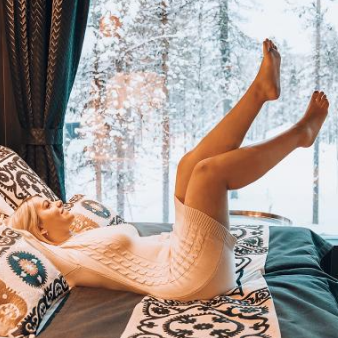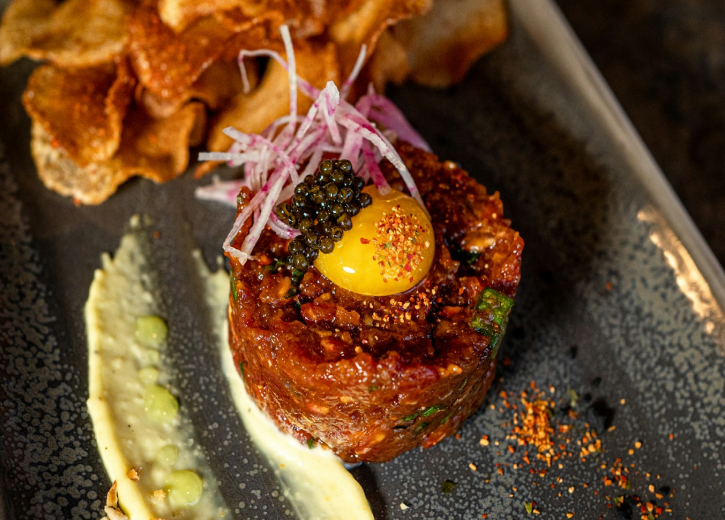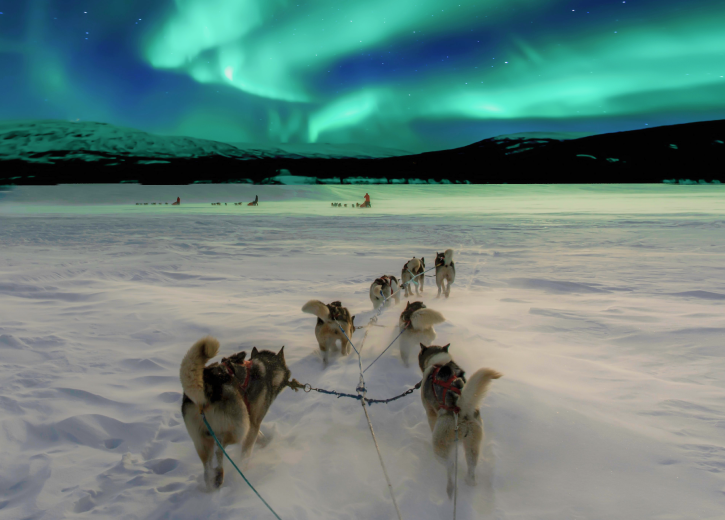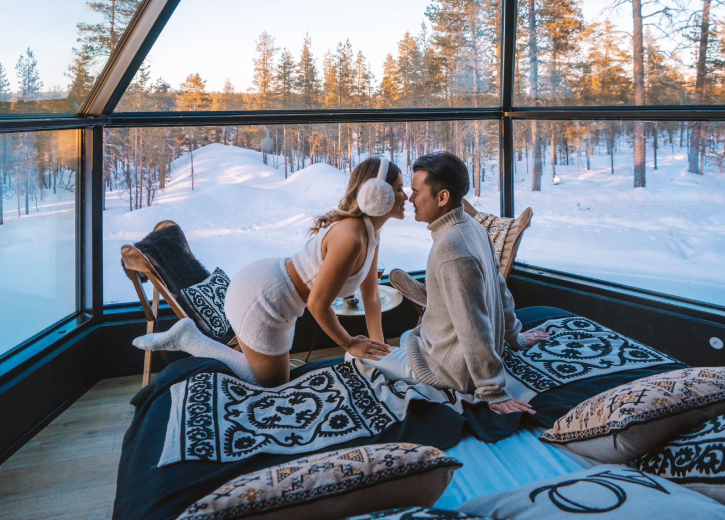The northern lights (aurora borealis) display a breathtaking spectrum of colors in the night sky, each created by different scientific processes. The most common color is vibrant green, produced by oxygen molecules at lower altitudes. Rare red auroras come from high-altitude oxygen, while nitrogen creates blue and purple hues. Pink or rose appears when both oxygen and nitrogen interact simultaneously. Yellow and orange auroras result from a mixture of red and green emissions. Each color appears at specific altitudes and under particular solar conditions, creating the magical light show visible in the dark Lapland skies.
Understanding the magical colors of the northern lights
The northern lights create one of nature’s most enchanting spectacles, painting the dark skies with dancing colors that seem almost magical. This natural phenomenon occurs when charged particles from the sun collide with gas atoms in Earth’s atmosphere, causing them to emit light. The resulting display varies dramatically depending on altitude, solar activity, and atmospheric conditions.
What makes the aurora truly special is how each color tells a different story about what’s happening high above us. From the edge of space to the upper atmosphere, these interactions create a canvas of shifting colors that have captivated humans for millennia. The pristine skies of northern Finland, with minimal light pollution, provide an ideal setting for witnessing the full spectrum of aurora colors.
The glass-ceiling views in Lapland offer a perfect vantage point for observing these colors as they evolve throughout the night, allowing you to stay warm whilst the light show unfolds overhead. Sometimes, patient observers might even spot a curious fox wandering beneath the illuminated sky, adding to the magical experience.
What causes the different colors of the northern lights?
The various colors of the northern lights are created by different gases in our atmosphere reacting with charged particles from the sun at different altitudes. When these solar particles collide with atmospheric gases, they become “excited” and release energy in the form of light – similar to how a neon sign works, but on a cosmic scale.
The most common aurora color – green – comes from oxygen molecules at relatively low altitudes of 100-300 km. When solar particles strike these oxygen atoms, they emit a distinctive green glow that dominates most aurora displays. This is why first-time aurora viewers are most likely to witness green lights dancing across the sky.
Higher up in the atmosphere (300-400 km), oxygen produces rare red auroras. These are less common because they require more energetic solar particles to reach these altitudes. Blue and purple hues come from nitrogen molecules at the lower edge of the aurora (95 km), while pink appears when both oxygen and nitrogen emissions combine. Yellow and orange occur when red and green emissions mix in the atmosphere.
The intensity of solar activity also plays a crucial role. During powerful solar storms, more energetic particles reach Earth, creating brighter auroras with a wider range of colors that can sometimes be visible even at lower latitudes.
Which northern lights colors can you see in Finnish Lapland?
Finnish Lapland offers exceptional opportunities to witness the full spectrum of aurora colors due to its prime location under the “aurora oval” – the zone of highest aurora activity. The most frequently observed color in Lapland’s skies is green, which appears in about 80% of all aurora displays and is often the first color visitors will notice.
The pristine dark skies of northern Finland also reveal more subtle hues that might be missed in areas with light pollution. On nights with moderate aurora activity, observers may witness shimmering curtains of green with purple or blue fringes along the bottom edges. These blue-purple displays often appear briefly at the beginning or end of aurora shows.
During strong geomagnetic storms, which typically occur around the equinoxes (September and March), the full palette becomes visible. Rare red auroras might crown the display at higher altitudes, while the middle portion glows green, and the lower fringes shimmer with blue and purple. These multi-colored displays are particularly breathtaking when viewed through glass ceilings, allowing you to witness the complete vertical structure of the aurora.
The peaceful environment of northern Finland, away from city lights, provides ideal conditions for seeing even the most delicate pink and yellow hues that blend between the primary colors. These subtle transitions are often missed in photographs but are breathtaking when observed with the naked eye.
Do different aurora colors have special meanings or folklore?
Throughout history, different cultures have attributed various meanings to the colors of the northern lights, creating rich folklore traditions. For the Sámi people, the indigenous inhabitants of Lapland, the aurora has deep spiritual significance. They traditionally believed the lights were the souls of the departed, with different colors representing different spirits.
In Finnish folklore, the green lights were often associated with magical foxes sweeping their tails across the snow, creating sparks that flew up into the sky. This “fox fire” (revontulet in Finnish) is still the Finnish word for northern lights today. The rarer red auroras were sometimes seen as omens or signs of significant events to come.
Norse mythology viewed the aurora as reflections from the shields and armor of the Valkyries, with different colors representing different warrior maidens. Red auroras were particularly significant, sometimes interpreted as the blood of warriors who had died in battle.
Beyond Nordic traditions, many indigenous cultures across the Arctic circle have their own interpretations. Some believed that whistling at the lights would cause them to come closer, while others warned against it, fearing the lights might sweep down and carry away those who disrespected them.
These cultural interpretations add a fascinating dimension to aurora viewing, connecting modern observers to thousands of years of human wonder at this celestial phenomenon. Understanding these stories enhances the experience, allowing visitors to connect with the rich cultural heritage of the northern regions while marvelling at the scientific wonder above.
Key insights about northern lights colors for your aurora adventure
When planning your northern lights viewing experience, understanding the colors can significantly enhance your appreciation of this natural wonder. The best displays typically occur during the darkest months from September to March, when Lapland’s long nights provide ample opportunity to witness the full spectrum of aurora colors.
For photographers, each color presents different challenges and opportunities. Green auroras are the easiest to capture, even with basic equipment, while red and purple require more sensitive cameras and longer exposures. Keep in mind that cameras often pick up colors that are difficult for the human eye to see, so your photographs might reveal hues that weren’t immediately visible during viewing.
Weather conditions play a crucial role in color visibility. Clear, crisp nights with temperatures below freezing often provide the best clarity for distinguishing subtle color variations. Patience is essential, as aurora displays can change rapidly, with different colors appearing and disappearing throughout the night.
The best viewing experience combines comfort with darkness. Glass-ceiling accommodations in northern Finland offer the perfect balance, allowing you to watch the full color spectrum unfold above while staying warm. The unobstructed views let you appreciate how the colors shift and dance across different altitudes in the atmosphere.
Remember that each aurora display is unique, with its own color signature and behavior. Some nights might feature predominantly green lights, while others might reveal the full palette from red to purple. This unpredictability is part of what makes aurora hunting so magical – you never know exactly what colors will paint the sky on any given night in Lapland’s wilderness.



